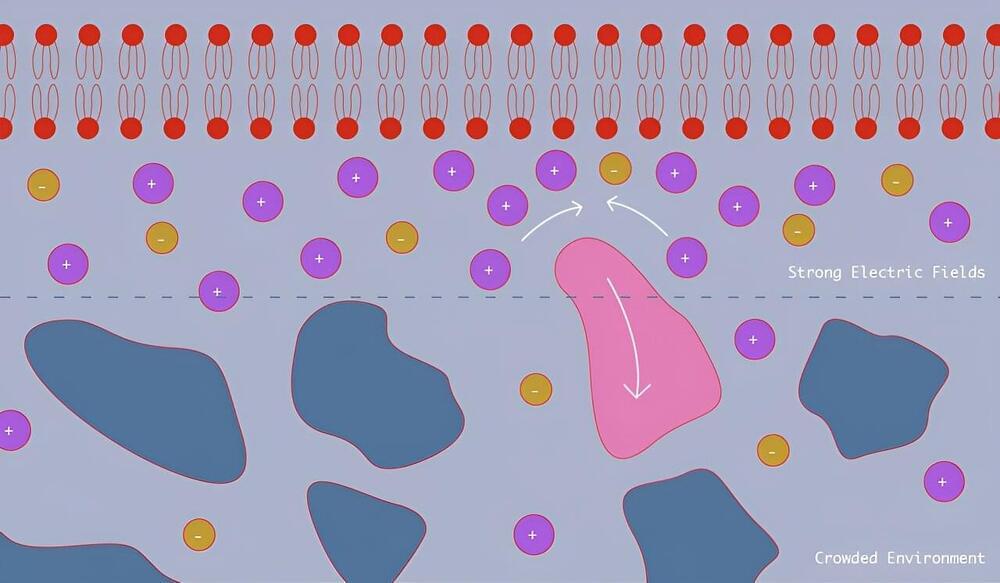The humble membranes that enclose our cells have a surprising superpower: They can push away nano-sized molecules that happen to approach them. A team including scientists at the National Institute of Standards and Technology (NIST) has figured out why, by using artificial membranes that mimic the behavior of natural ones. Their discovery could make a difference in how we design the many drug treatments that target our cells.
The team’s findings, which appear in the Journal of the American Chemical Society, confirm that the powerful electrical fields that cell membranes generate are largely responsible for repelling nanoscale particles from the surface of the cell.
This repulsion notably affects neutral, uncharged nanoparticles, in part because the smaller, charged molecules the electric field attracts crowd the membrane and push away the larger particles. Since many drug treatments are built around proteins and other nanoscale particles that target the membrane, the repulsion could play a role in the treatments’ effectiveness.









Comments are closed.